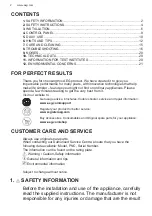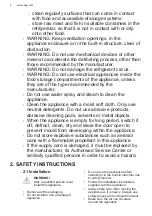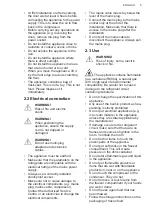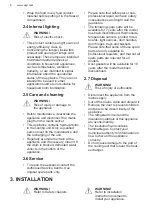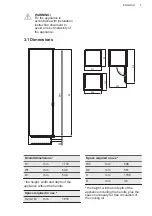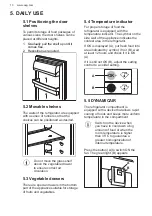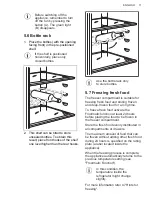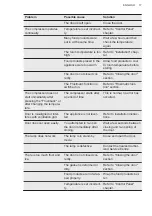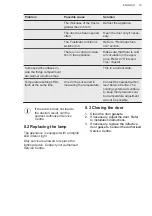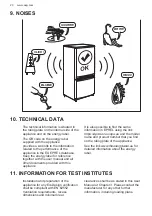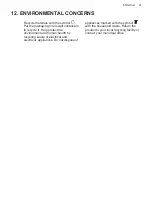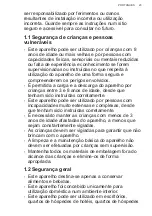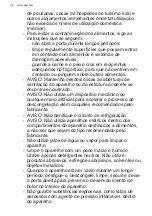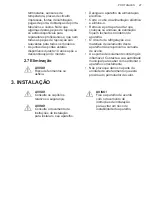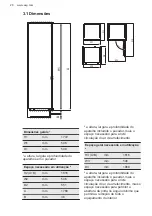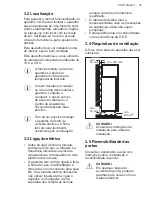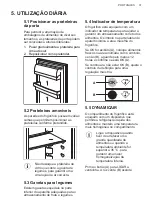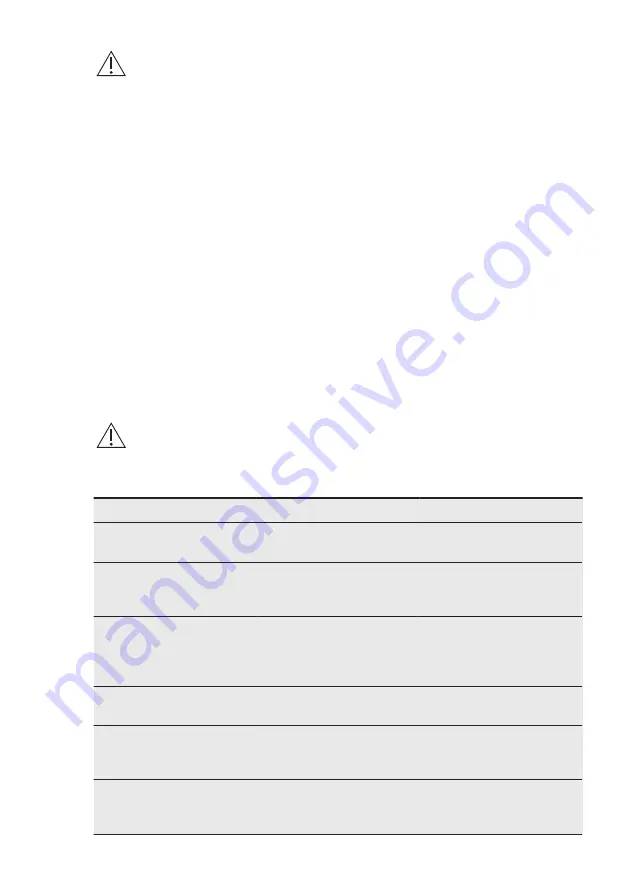
CAUTION!
A temperature rise of the
frozen food packs during
defrosting may shorten
their safe storage life.
Do not touch frozen
goods with wet hands.
Hands can freeze to the
goods.
3. Leave the door open. Protect the
floor from the defrosting water e.g.
with a cloth or a flat vessel.
4. In order to speed up the defrosting
process, place a pot of warm water in
the freezer compartment. In addition,
remove pieces of ice that break away
before defrosting is complete. Use
the supplied ice scraper for this
purpose.
5. When defrosting is complete, dry the
interior thoroughly. Keep the ice
scraper for the future use.
6. Switch on the appliance and close
the door.
7. Set the temperature regulator to
obtain the maximum coldness and
run the appliance for at least 3 hours
using this setting.
Only after this time put the food back into
the freezer compartment.
7.5 Period of non-operation
When the appliance is not in use for long
period, take the following precautions:
1. Disconnect the appliance from
electricity supply.
2. Remove all food.
3. Defrost the appliance.
4. Clean the appliance and all
accessories.
5. Leave the doors open to prevent
unpleasant smells.
8. TROUBLESHOOTING
WARNING!
Refer to Safety chapters.
8.1 What to do if...
Problem
Possible cause
Solution
The appliance does not op‐
erate.
The appliance is switched
off.
Switch on the appliance.
The mains plug is not con‐
nected to the mains socket
correctly.
Connect the mains plug to
the mains socket correctly.
There is no voltage in the
mains socket.
Connect a different electrical
appliance to the mains sock‐
et. Contact a qualified elec‐
trician.
The appliance is noisy.
The appliance is not suppor‐
ted properly.
Check if the appliance
stands stable.
Acoustic or visual alarm is
on.
The cabinet has been re‐
cently switched on.
Refer to "Door Open Alarm"
or "High Temperature
Alarm".
The temperature in the appli‐
ance is too high.
Refer to "Door Open Alarm"
or "High Temperature
Alarm".
www.aeg.com
16

